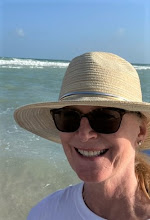
Based on a novel by Rearden Conner, this story brings us to 1921 Ireland, where citizens and soldiers alike are caught in the maelstrom of the Irish Republican Army, forces of the British Crown, and the Black & Tans. Hired by Britain to help suppress the Irish, the mercenary Black and Tans were joined by other ex-military personnel known as Auxiliaries. Together these two groups became notorious for their indiscriminate violence against the Irish, including burning towns (look up Cork, Conner's hometown), opening fire on a football-watching crowd, and random beatings and killings.
When the IRA, known for its assassinations of British sympathizers and police, would strike, the Black and Tans would brutally retaliate. Their name allegedly came from the fact that when they arrived in Ireland, there were not enough uniforms for all of them; therefore, their clothes became an amalgam of military and police uniforms, khaki and dark. (The wanton violence eventually repulsed even the British, and after wreaking havoc for several years, they were finally removed from Ireland; their presence had served no purpose other than to broaden support for the IRA.)
Enter Don Murray, an Irishman from America attending medical school. He is quickly caught up in random violence that forces him to decide on which side of the fence he will reside. Then meet the powerful James Cagney who is a Professor of Medicine, and a commander in the Irish Republican Army. This is a great Cagney role and worth a movie watch just to see the many layers of his personality unfold.
Other notables are the beautiful Dana Wynter (if you’re a Science Fiction movie fan, you’ll recognize her from the 1956 “Invasion of the Body Snatchers”), Glynis Johns, Michael Redgrave (father of Lynn and Vanessa), and watch for an early and memorable appearance by Richard Harris. Also present are famed British stage actors Cyril Cusack and Sybil Thorndike.
The film is fairly action packed and quite tense at times. The characters grapple with the use of violence - is it a justified means to an end? If so, to what degree, or are there no limits? When does a person fighting for his country’s freedom become a fanatical terrorist?
Shot on location in Ireland, the cinematography (Erwin Hillier) is stunning in its black and white beauty. Street scenes are gritty and grim, and lighting and camera angles make the most of both city and landscape settings. Near the end, there’s a great shot of Cagney standing in the shadows in a doorway, with the light behind him. Will he step into the light or remain in the dark? Brilliant shooting.
My favorite scene is the last - not because it’s unpredictable but because it’s beautifully filmed. You’ll even see some nice pre-Sergio Leone dramatic closeups. And while the credits roll, someone is pounding on a door, leaving the film with its moral ambiguity intact.

No comments:
Post a Comment